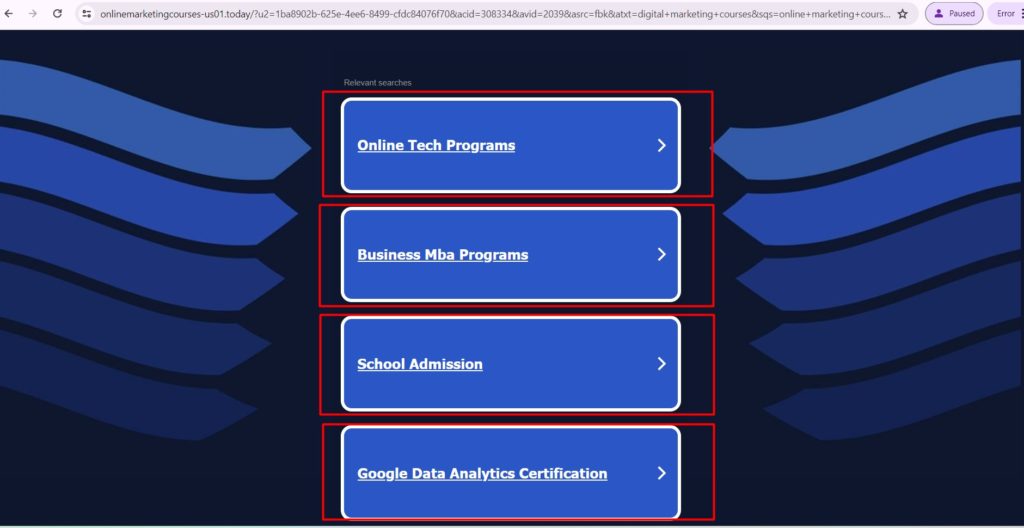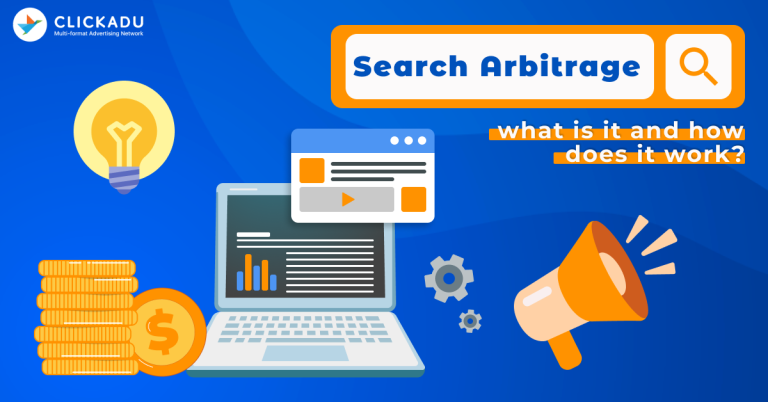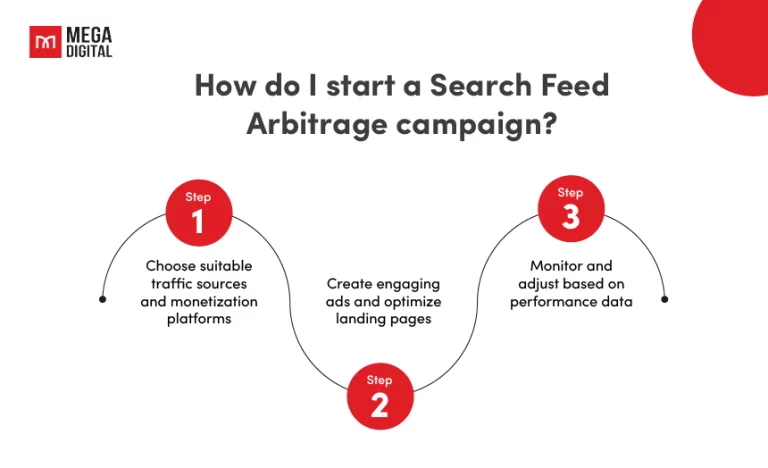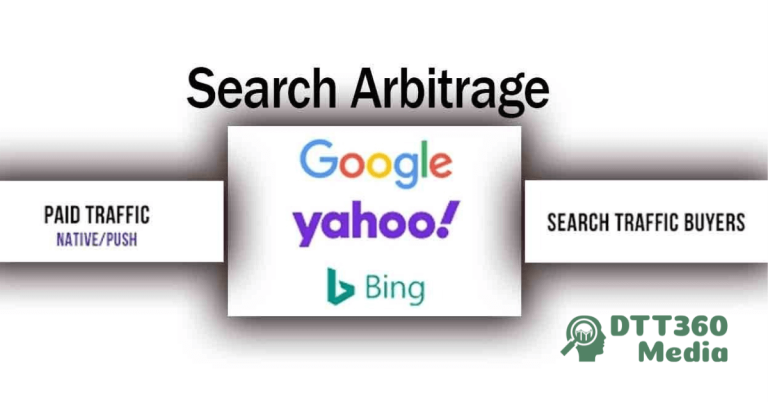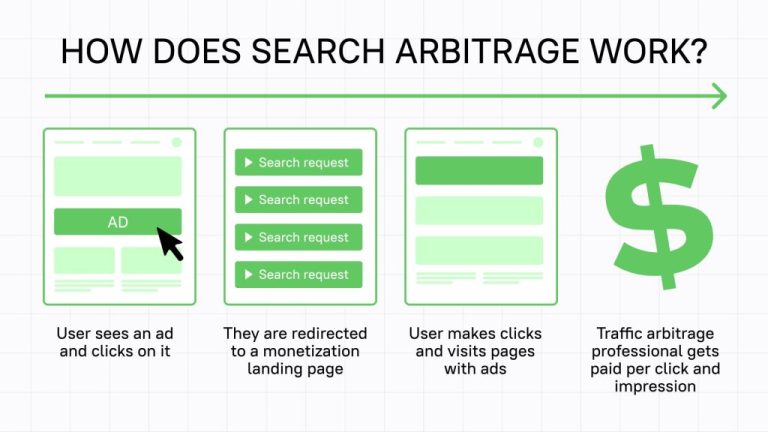What Is AFD In Search Arbitrage
Ever wondered how some businesses seem to thrive by exploiting tiny differences in online search results? Welcome to the intriguing world of AFD, or Arbitrage for Devices, within search arbitrage. It’s a niche yet profitable strategy where advertisers smartly navigate fluctuating ad prices across devices to make a neat profit. Here, slight variations in CPC can lead to substantial earnings.
Tracing its origins to the early days of digital advertising, AFD in search arbitrage involves buying low CPC ads and redirecting traffic to high-yield offers. Some might even call it an art form! In recent years, this method has become more sophisticated, aided by advances in AI and data analysis. Experts estimate that with the right tweaking, returns can surge up to 40% above average.
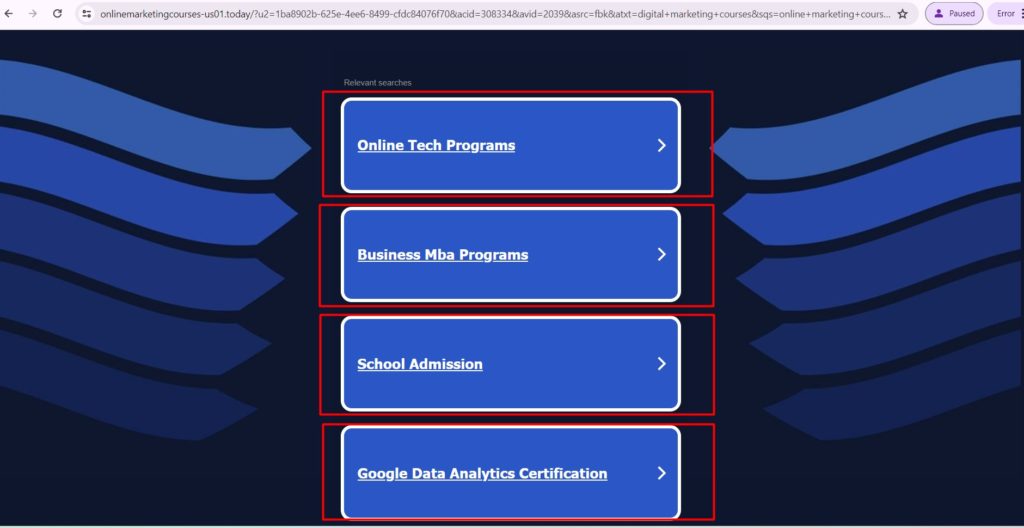
What is AFD in Search Arbitrage
AFD stands for Arbitrage for Devices in the realm of search arbitrage. It’s a clever strategy that businesses use to profit from differences in ad costs. Imagine buying something cheaply in one place and selling it for more elsewhere. That’s basically the idea! In AFD, advertisers take advantage of fluctuating costs across different devices.
Search arbitrage, where AFD finds its niche, has been around since the dawn of online ads. It started with businesses figuring out how to buy ads low and sell high. With the help of data analysis, this practice has become more refined. Now, advanced tools and insights support better decisions. The result? Consistent revenue streams for those who master it.
But how does AFD actually work? In search arbitrage, different devices have different ad costs. Advertisers buy ads on devices where costs are low. They then redirect this traffic to high-paying offers. This process can create startling profit margins!
Leveraging technology is a big part of success in AFD. For instance, AI helps in predicting which device will have the lowest ad costs. This saves time and money for advertisers. When done right, the financial benefits can be significant. However, knowledge and timing are key. Seasoned experts often earn up to 40% more by using these strategies effectively.
Exploring the Concept of AFD
When exploring AFD, or Arbitrage for Devices, you’re diving into a smart buying and selling technique. This concept revolves around making profits from small differences in advertising costs across various devices. By understanding this, businesses can optimize their spending. AFD is particularly important in the digital marketing world. Here, every penny counts, and a small difference can yield significant returns.
The core idea of AFD is rather simple. Advertisers purchase traffic on devices where the cost-per-click (CPC) is lower. They then redirect that traffic to more lucrative offers. Think of it as a game of chess. Each move, or decision, is carefully planned to maximize profits.
- Choose devices with low CPC
- Redirect traffic to high-yield offers
- Analyze data for informed decisions
Technology plays a crucial role in making AFD successful. Data analysis and AI help advertisers predict cost changes. This allows them to adjust their strategies swiftly. As technology evolves, AFD strategies get sharper. Businesses that adopt these strategies often stay ahead of the competition.
In exploring AFD, you’ll see that it’s not just about numbers but timing too. An accurate prediction means buying low and selling high efficiently. That’s where expert knowledge makes a difference. When businesses master AFD, they gain more control over their advertising expenses. This efficiency leads to increased profits without excessive spending.
The Evolution of Search Arbitrage
Search arbitrage has come a long way since its early days. Initially, it was a simple strategy based on buying low and selling high in the digital ad space. As the internet grew, so did the complexities of this practice. Advancements in technology introduced new tools, making it easier to track and exploit ad costs. This evolution transformed search arbitrage into a more sophisticated process.
In the beginning, businesses relied heavily on manual checks and guesswork. They had to invest significant time and effort into understanding ad trends. As data analysis tools developed, advertisers gained clearer insights into market dynamics. Now, they can make quicker and more accurate decisions. This shift has been a game-changer for many companies.
- Manual tracking systems
- Introduction of data analysis tools
- AI and machine learning integration
The integration of AI and machine learning has further revolutionized search arbitrage. These technologies allow for better prediction of cost changes. They help advertisers understand patterns and optimize their strategies. With AI’s assistance, companies can automatically adjust their ad campaigns. This ensures they capitalize on the best opportunities without delay.
Looking at the current state of search arbitrage, it’s clear that it involves more than just technology. The human touch, experience, and creativity play a significant role too. Marketers who understand both the technical and creative aspects excel in this field. By blending these skills, they can navigate the dynamic landscape of digital advertising. The future promises even more advancements, continuing the evolution of search arbitrage.
How AFD Works in Search Arbitrage
AFD, or Arbitrage for Devices, operates through a clever use of device-specific ad costs. Advertisers tap into the varying costs of ads across different devices. The main goal is to purchase ads at a lower cost on one device and redirect traffic to a more profitable channel. This strategy requires a keen eye on the fluctuations in ad pricing. Timing is crucial to make the most profit.
Understanding device differences is vital for AFD to be successful. For instance, ad costs can vary significantly between mobile phones, tablets, and desktops. Advertisers analyze these patterns to pinpoint which device offers the best opportunity. By focusing on the right device, they can save money while maximizing returns on their traffic. Effective strategies often combine observation with quick action.
A key component of AFD in search arbitrage is data analysis. Businesses employ advanced analytics to get a complete picture of device-specific ad behavior. This includes understanding when and where ad costs drop. In addition, advertisers use historical data to predict future trends. With these insights, they make informed decisions about when to act.
- Monitor device-specific ad costs
- Analyze historical data and trends
- Adapt strategies based on current insights
Automation tools play an essential role in managing AFD strategies. They allow businesses to respond quickly to changes in the market. For example, an automated system can adjust ad spend instantly when it detects favorable conditions. This agility ensures that advertisers don’t miss valuable opportunities. Ultimately, well-managed automation leads to higher efficiency and better results.
The blend of technology and strategy makes AFD a powerful tool in search arbitrage. It’s not merely about finding lower costs; it’s about using technology to gain insights and act decisively. Successful advertisers use every resource available— from data analysis to automation — to optimize their strategies. This combination helps them outperform competitors and achieve the best possible returns. As technology continues to evolve, so does the potential for even greater success with AFD.
The Role of AI and Data Analysis in AFD
AI and data analysis play a crucial role in the effectiveness of AFD, or Arbitrage for Devices. These technologies provide advertisers with deep insights into ad pricing on different devices. AI algorithms can quickly process large datasets, identifying patterns and trends that might be missed by humans. This enables advertisers to make data-driven decisions. These insights lead to smarter strategies and improved results.
AI enhances AFD by forecasting shifts in ad costs. Predictive analytics help advertisers know when to take action or hold back. For example, AI can alert them to buy more traffic when costs are likely to drop. This foresight not only maximizes profits but also minimizes risks. As a result, advertisers can consistently outperform their competitors.
- Identify ideal buying times
- Track cost changes in real-time
- Optimize ad placements automatically
Data analysis complements AI by adding context to raw numbers. It breaks down complex datasets into understandable insights. Understanding user behavior and engagement rates helps advertisers adjust their campaigns. By comparing historical and current data, advertisers can refine their strategies. This continuous improvement cycle keeps their campaigns effective and efficient.
With AI and data analysis working hand in hand, AFD strategies become more precise and adaptable. Advertisers can quickly respond to fluctuating market conditions. The tools they use continuously learn and improve, providing even more accurate predictions over time. This dynamic approach ensures that businesses stay ahead in the competitive world of digital advertising. Moreover, as technology advances, the integration of AI and data analysis in AFD will only grow stronger.
Potential Returns from AFD in Search Arbitrage
The potential returns from AFD in search arbitrage can be significant. By focusing on device-specific ad costs, businesses can increase their profit margins. Imagine making a dollar for every few cents spent on ads! This kind of return is what skilled advertisers aim for. Successful AFD strategies transform
Key Takeaways
- AFD means Arbitrage for Devices in search advertising.
- It involves buying low-cost ads on specific devices.
- You redirect traffic to higher-paying offers online.
- The aim is to maximize profit through strategic planning.
- Technology aids in identifying the best ad opportunities.
Frequently Asked Questions
Diving into AFD in search arbitrage can feel like cracking a code. To help, here are some simple explanations to common questions about this interesting strategy.
1. How does AFD create profit in search arbitrage?
AFD generates profit by strategically choosing ad placements based on device types. Advertisers buy low-cost ads and direct the resulting traffic to partners offering higher payouts. This model leverages cost differences between devices to optimize returns.
By continuously analyzing these differences, advertisers can adjust their strategies in real-time. This approach not only maximizes profitability but also ensures a competitive edge in the digital advertising space.
2. Can beginners use AFD effectively?
Yes, beginners can definitely get started with AFD, but it requires some guidance. By learning from experienced marketers, you can understand the nuances of device-specific ad costs and traffic flow. Starting with simple campaigns helps you gain confidence and essential skills.
As you become more familiar, adapting strategies to changing market trends becomes easier. With the right tools and a willingness to learn, you can effectively engage in AFD and grow your expertise gradually.
3. What role does technology play in AFD?
Technology is a crucial part of AFD, empowering advertisers to make data-driven decisions. Advanced analytics help in understanding user behavior across different devices, which is vital for optimizing campaigns. By using AI and machine learning, advertisers can predict shifts in ad costs.
These insights help to quickly adapt strategies and stay competitive. As technology continuously evolves, its capabilities further enhance the precision and efficiency of AFD strategies.
4. Is AFD suitable for all types of businesses?
AFD can suit many businesses, but its effectiveness depends on their advertising goals. Companies with diverse customer bases benefit most, as they can target multiple devices. However, businesses must first understand their audience and traffic sources.
Customizing strategies according to these factors enhances campaign effectiveness. With thorough research and planning, almost any business can find value in AFD’s approach.
5. How do advertisers measure success in AFD?
Success in AFD is measured through various metrics like ROI, click-through rates, and conversion rates. Advertisers monitor these indicators to assess the effectiveness of their campaigns. Using analytics tools, they can gain insights into traffic quality and ad performance.
Regularly analyzing and refining these metrics helps maintain campaign efficiency. By focusing on these key measurements, advertisers can ensure their AFD strategies deliver the desired outcomes.
Wrapping Up Our Understanding of AFD in Search Arbitrage
Exploring AFD in search arbitrage uncovers a dynamic strategy that capitalizes on device-specific ad costs. By integrating technology and keen market insights, you stand to gain significant returns. Understanding the balance of timing and placement is key to optimizing your campaigns.
Whether you’re a seasoned expert or a curious beginner, AFD offers avenues for growth and profit. The landscape of digital advertising is ever-evolving, and staying informed empowers you. Leveraging AFD effectively helps you maintain a competitive edge in this dynamic field.

